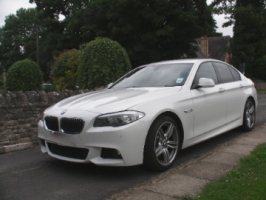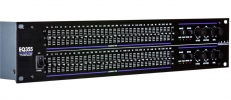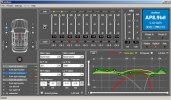
Last month's sneaky-peek was all about my mate's BMW 5-series which has recently had an Audison Prima AP8.9 bit amplifier/processor installed. In that article, we investigated a little more of this powerful amplifier's properties and confirmed that even straight out of the box, the Prima was capable of transforming the BMW paper and glue constructed speakers into something that actually sounds a whole lot better. We concluded that the original equipment is very underpowered which is why as standard, BMW's sound so poor.
The other element we focussed on was the built-in audio processing power of the system and the preset facility, which offers an optimised equalisation and time-alignment setting devised by the golden ears of the designers. However, it is very rare that a particular setting will suit all ears. As we have pointed out many times, we all hear things slightly differently and have our own sound preferences. The deeper you listen the clearer these individual aspects become which is why many hi-fi boffins can't leave the controls alone. Most are simply indulging themselves however.
So, my mate has been driving with his Prima upgraded system for a few weeks now and begun to question certain things that he was hearing on some of his favourite tracks. Before we go any further, it is worth mentioning that my mate loves heavy rock, thrash metal, iron underpants and steel socks! For those of you who enjoy such musical genres and have tried to listen to this in a car, you will know that this offers one of the biggest challenges in car audio. Rock music relies heavily on the separation in the middle frequencies in order to remain coherent. Without the detail in this area being properly separated, you can easily end up with a confused, distorted mess (this is exactly what your mum/wife/partner hears when you are playing such music in the bedroom and she is listening to it bleed over Eastenders through the bedroom carpet and living room ceiling).
The best thing about the car is that you have static conditions, albeit somewhat less than ideal, in which to create your perfect sound. The designers of Prima amplifiers know this of course, which is why they went to the effort of including a very powerful signal processor within their amplifiers. This on-board processor is a direct descendent of the now famous Audison Bit One. However, instead of featuring a 31-band graphic equaliser on each channel, Prima features a 10-band parametric equaliser. Check back to the original newsletter or visit www.fourmasterscaraudio.co.uk and read the blog which explains the difference!. In short, a 10 - band parametric can do nearly everything a 31 - band graphic can do but suffers far less from phase discrepancies caused by boosting and attenuating specific frequencies. Instead, the parametric equaliser has 10 centre frequency points but with bandwidth (called Q) so when you adjust 10K you are also proportionally adjusting frequencies above and below this centre frequency. The user can access and modify all of the settings of the on-board processor using a PC and is then in control of a whole host of parameters. It is quite easy to make something that once sounded good, sound really poor by playing with these controls unless, the tweaker has a good basic understanding of audio frequency manipulation and music. However, the expert is able to paint full 3D colour sound images using the same controls. Prima allows a user to create and store his or her own setting to compare and contrast against the factory preset, which I have to say, is very good already! Furthermore, custom tweaked sound files can be uploaded for access by others although, it is early days for that as yet.
So it was, that I thought I would treat my friend to a bespoke setting. This can take quite some time and it took about 3 hours for me to become fairly happy that I had improved rather than destroyed the previous setting. Although my ears are ageing fast, I do have experience of sound engineering both in studio and live situations. I have also been known to "shred" from time to time and so have a particular knowledge of my mate's genre preferences. A faster, younger, more technically agile "square pusher" would have completed the task in far less time but I was "playing" at the same time. I wasn't certain what my mate would make of my attempt so I said nothing and let him live with the car for a few days.
Happily, I received amazing feedback from said mate who was amazed at the detail he was now experiencing in the same car with the same equipment. Of course, my natural instinct was to take the accolades for myself but I don't think I could state hand-on-heart that it was all down to me. The Bit Drive technology in the Prima amplifier is so responsive and inspiring to use that it invites in-depth adjustment rather than a cursory tweak of the bass, treble and middle controls. Time alignment can be particularly tricky and I have to say I left that pretty much where it had been put in the preset version and spent most of my time rebalancing the mid-frequencies.
Prima is clearly a product, which in the hands of the right installer (not necessarily me!) has huge potential for matching a driver's specific taste and genre preferences. In my mate's case, he enthused in particular, about a Slash track from the 2012 Apocalyptic Love album called "Anastasia". He asked what the noise was called when a guitarist runs their fingers gently up or down the strings making a kind of squeak. As far as I know there is no industry standard name for this but I call it string zip. "Yeah that's it." he said. "I can hear this on Slash's guitar. An actual physical sound created by Slash's own hands - it's awesome!" enthused my happy, happy mate.
Of course, this kind of product needs to come with a warning. Now his listening has become more in-depth, my hapless mate has started asking about speaker upgrades. I feel confident he will end up with Prima speakers before too long and a hobby that will last him a lifetime!



